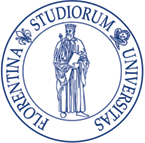| Regularity theory for area-minimizing currents.
Abstract: The Plateau's problem, named after the Belgian physicist J. Plateau,
is a classic in the calculus of variations and regards minimizing the area
among all surfaces spanning a given contour. Although Plateau's original
concern were $2$-dimensional surfaces in the $3$-dimensional space,
generations of mathematicians have considered such problem in its generality.
A successful existence theory, that of integral currents, was developed by
De Giorgi in the case of hypersurfaces in the fifties and by Federer and
Fleming in the general case in the sixties.
When dealing with hypersurfaces, the minimizers found in this way are rather
regular: the corresponding regularity theory has been the achievement of
several mathematicians in the 60es, 70es and 80es (De Giorgi, Fleming, Almgren,
Simons, Bombieri, Giusti, Simon among others).
In codimension higher than one, a phenomenon which is absent for hypersurfaces,
namely that of branching, causes very serious problems: a famous theorem of
Wirtinger and Federer shows that any holomorphic subvariety in $\mathbb C^n$
is indeed an area-minimizing current. A celebrated monograph of Almgren solved
the issue at the beginning of the 80es, proving that the singular set of a
general area-minimizing (integral) current has (real) codimension at least 2.
However, his original (typewritten) manuscript was more than 1700 pages long.
In a recent series of works with Emanuele Spadaro we have given a substantially
shorter and simpler version of Almgren's theory, building upon large portions
of his program but also bringing some new ideas from partial differential
equations, metric analysis and metric geometry.
|

